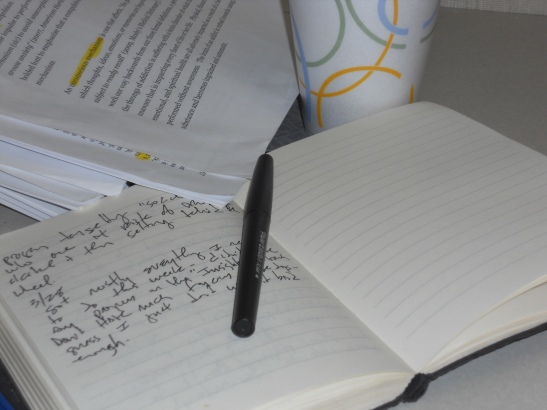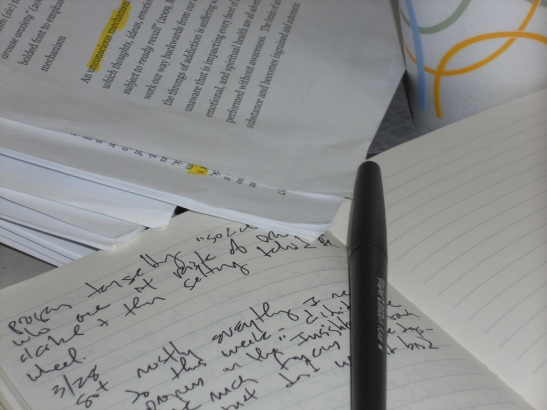I sit in meetings, all the time, where the topic focuses on making changes. Whether the meeting is about the requirements needed for building a software application or developing a treatment plan, the basic question is always the same: How do we create the change we want to see?
Complicated details flow back and forth in these meetings. But, the starting point should, in my experience and opinion, start from a much more basic place. Regardless of the context, if change is wanted, then understanding the “when” and “why” we behave the ways we do is the most crucial step in driving towards a goal. If we do not have a full grasp of our current situations, then we cannot proceed, as we will be attempting to move forward with our eyes closed.
All sorts of literature* has shown that self-monitoring is a crucial component of positive change. But, people and organizations are slow to even try picking up a pen and notebook in an attempt to gather their own thoughts about themselves. Someone could say, “Of course journaling thoughts works for you, you’re a writer” and they would be right. However, writing down our current thoughts about specific things provides a means of redirecting negative behaviors before they begin.
One of the biggest negative behaviors I’ve recognized across various domains is inertia. That is, people tend to remain within their current situations without even attempting a step towards positive growth and change. They may have an idea about where they want to be, but they do nothing to get there. People really will continue to behave as they always have behaved, blind to the reality that they themselves can bring about positive change. It’s easier to do things “the way we’ve always done them” than it is to become self-aware.
But, I am certain that a pen and notebook can change lives for the better. If we can collect our thoughts about when and why we do certain things and then think about how we might behave differently, we can become the people that our instincts tell us we are. It’s not easy; there’s work and sometimes looking at ourselves presents images with which we aren’t all that comfortable. But, positive outcome is always worth the effort.
So, the answer to the question: How do we create the change we want to see? Buy a pen and notebook, understand the when and why we act the way we do, create a vision of where we want to be, and then work, every day, towards that vision. Ask yourself: Did I do anything to bring my vision into reality today? In time, you will achieve your vision.
* See Jeffery D Houghton, Steven K Yoho. Journal of Leadership & Organizational Studies. Flint: 2005.Vol. 11, Iss. 4; pg. 65, 19 pgs; Hubbs, D., & Brand, C., (2005). The paper mirror: Understanding Reflective journaling. The Journal of Experiential Education. 28(1), pg. 60-72; and Lewis, Judith (et al). (2011). Substance Abuse Counseling. Belmot, CA: Cengage Learning for efficacy data about self-monitoring, self-observation, and self-talk



March 31, 2014 at 2:15 pm
Reblogged this on A Blog by Juan Blea and commented:
This was Saturday’s post and to me, it has a lot to offer…just wanted to give it another opportunity to be read…